Henrik Kniberg's Blog, page 2
January 7, 2018
Do it for the kids
As climate scientists have long predicted, the world is experiencing a record amount of extreme weather events – droughts, hurricanes, wildfires, flooding, heatwaves, and extreme cold.
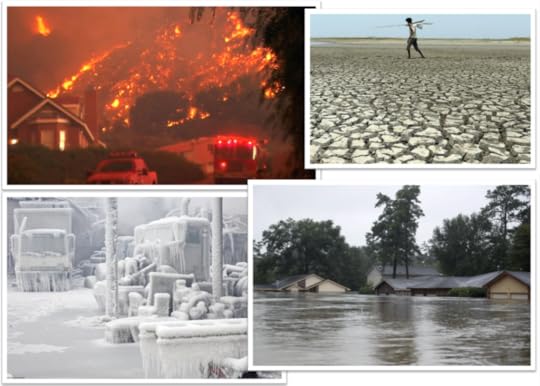
Wildfires in Santa Rosa Californa, Drought in Somalia, Extreme cold in Chicago, Hurricane Harvey in Houston.
It’s hard to prove if any specific disaster is due to climate change, but that’s not important. The key point is the overall trend: climate change increases the frequency and severity of extreme weather events, and it’s happening really fast. This also creates climate refugees, political instability, and increases the risk of war. Basically, the world is becoming a less and less safe place to live.
This graph (source) is just for the US, but the pattern is worldwide:
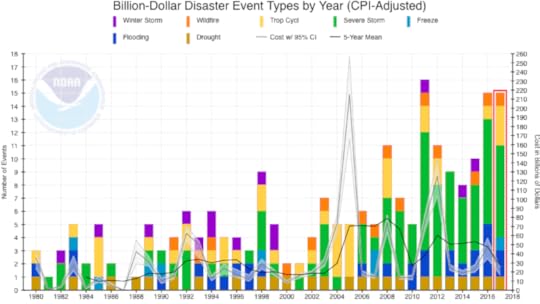
source: https://www.ncdc.noaa.gov/billions/ti...
The bad news is this will most likely keep getting worse over the next few decades – even if we were to completely eliminate all CO2 emissions right now. Climate change is like a huge flywheel that we’ve set in motion over the past century, and even when we stop spinning the wheel it will keep going for decades or more, due to inertia.
So then you might wonder – why bother? Why should I care about climate change, why should I carbon offset, why should I reduce my personal emissions, why should I fly less, switch to an electric car, get solar panels, eat less meat, and support carbon taxing initiatives?
The kids. Do it for your kids, and their kids. Or your future kids, or your nephews, or your friend’s kids.
You see, the good news is that we know the cause of climate change, and we know how to solve it! It just takes a long time to see the effects.
To be blunt, this is not really about making the world better place. The stakes are a lot bigger than that. This is about actually keeping the world habitable to human beings! Because if we don’t radically reduce our emissions, the world our kids will inherit will be unrecognizable and quite possibly uninhabitable.
So, if you need some inspiration, stare a child in the eye (in a friendly way, not creepy…) think about the day they grow up and ask you what you did when you learned that we were destroying the climate.
Here are some starting points if you want to act:
Friendly Guide to Climate Change – a “big picture” animated video summarizing the whole climate change thing, the cause, what you can do, etc.
GoClimateNeutral.org – a service to help you become carbon neutral (= eliminate your own carbon footprint). Think of this as a minimum first step.
DrawDown – a book that goes through 100+ concrete and well-researched solutions to climate change.
If you want to talk more about this kind of stuff then feel free to join our Climate Crisplet community.
December 12, 2017
Remote keynote offer (because the world needs less business trips)
OK here’s an offer to any conference organizer in the lean/agile/tech/climate space. I get a lot of requests to do conference keynotes, and unfortunately have to turn down the vast majority. I limit long-distance travel for family reasons, and also for climate reasons (although I confess I’m in Thailand right now as I write this…. hard to be 100% consistent…).
Now I’m thinking: Why should something as mundane as physical transport get in the way of participating in a great conference? And, in this world of catastrophic climate change, shouldn’t most business trips be replaced with remote participation?
My hypothesis is that it’s possible to remote-participate effectively in a conference – to do a keynote or talk, participate in workshops, even hang out with people in the hallway. I’ve tried this a few times using video conference and telepresence robots. In fact, 4 years ago I was sitting on this same beach in Thailand, remote-participating in a Spotify event in Stockholm using a Double (see “What it feels like being an ipad on a stick on wheels“). That was fun and a bit clunky, but it was 4 years ago so I bet the telepresence robots have come a long way since then!
So here’s my offer:
I’ll do remote keynote (or similar) at your conference or event, and participate for a full day (or half day, depending on time zone).
I’ll do it at half my usual keynote fee: €6,750 instead of €13,500 (subject to change).
That saves you thousands of € that you can instead invest in a top-of-the-line remote telepresence robot, for example Beam or Double. Technology you can keep and reuse, instead of wasting money moving a physical body from A to B plus accomodation.
No skimping on quality. If we’re going to do this, we do it well. Iron-tight internet connection, great hardware and software, and a plan for how I’ll navigate obstacles like stairs and elevators.
Money back guarantee. If you did your best with the tech setup and things still turn out kind of crappy for whatever reason (which is a real risk), I’ll just charge whatever you think it was worth (even if it was 0).
Think of it as an experiment. If it works well, hopefully the practice will spread, and people will save travel money while also helping the climate.
If you are interested, feel free to reach out to henrik.kniberg at crisp.se, or comment below.
December 9, 2017
Here’s something you can actually, really do about climate change
As the devastating consequences of climate change become increasingly obvious (flooding, fires, storms, drought, melting icecaps, rising sea levels, etc), the question on most people’s mind is “what can I actually, really do about it?”. Well, listen up.
The most obvious minimum first step is to eliminate your own personal carbon footprint, and become climate neutral! Think of the First Rule of Holes: “If you are stuck in a hole, stop digging!”. Climate Change is the biggest hole in the world and we all need to stop digging right now.
To make this as simple and effective as possible we’ve a built super-simple service called GoClimateNeutral. Check out my 3 minute summary video:
Going climate neutral yourself obviously doesn’t solve the whole problem, but at least you’ll stop adding to the problem. And the more people who go climate neutral, the more we slow down climate change. And since we are in Christmas season: going climate neutral is the best possible christmas present you can give to the world!
The effects are long-term, so it will probably be your kids and grandkids who benefit more than yourself. But I think we owe it to them, and they will definitely hold us accountable some day. Leaving a habitable planet to the next generation is really a minimum sign of courtesy, wouldn’t you say?
Got questions? Check the FAQ.
Spread the word! The more people who sign up, the bigger impact we can make.
If you want to go climate neutral, but you prefer other means than our service, that’s of course just as fine! I suggest you sign the Zero Carbon Manifesto and then inspire others by telling them how you are doing it.
If you want to learn more about climate change, check out my other video Friendly Guide to Climate Change.
#everytoncounts
Agile – where are we at? Slides from my keynote at Agile Tour Bangkok.
Here are the slides from my keynote “Agile – where are we at?” at Agile Tour Bangkok i November. Here’s the abstract:
Everyone is talking about Agile. I stumbled into this 15 years ago and have been living and breathing Agile since then, seeing it grow from a small movement within software, into an industry-wide revolution and then gradually become mainstream. More and more companies around the world, even big traditional companies, are turning themselves inside out trying to be Agile. Now it’s time to take a step back and reflect. What is going on? What is this all about? And where is it headed?
The CO2 emissions from this trip were offset using Trine and GoClimateNeutral.
Sample slides:

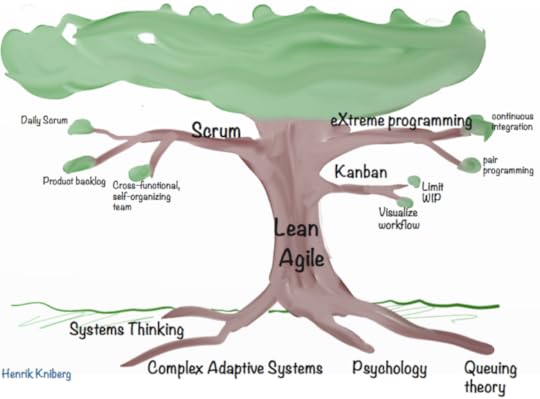
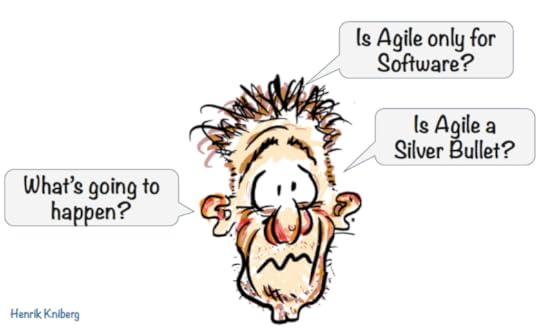
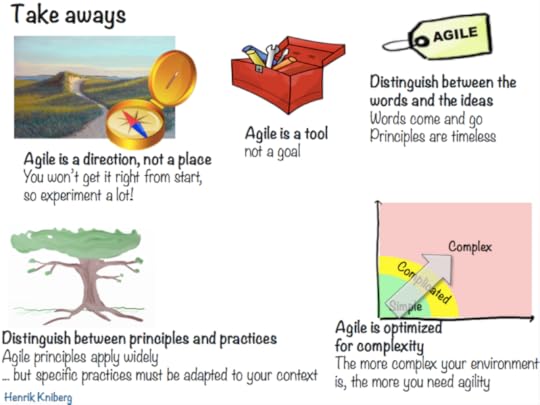
October 10, 2017
Scaling Agile @ LEGO and Spotify – my talk at EA träff
Here are my slides from today’s talk “Scaling Agile @ LEGO and Spotify” at EA träff in Stockholm (EA = enterprise architecture). Fun to hang out with enterprise architects and learn what that’s all about 
September 27, 2017
Is train a feasible alternative to flying?
As I write this I’m sitting on a train headed back to Sweden, pondering the result of a year’s experimentation with travelling by train instead of flying. Is this an effective way to reduce my carbon footprint? The jury is in! Read on.
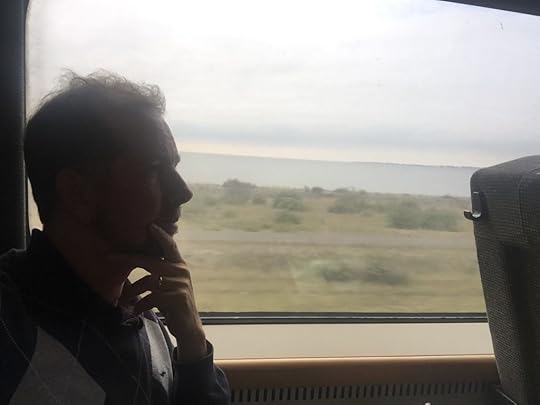
One common rallying cry among climate advocates is to fly less (or ideally not at all). I consider myself a climate advocate (here’s my entry ticket), but I’m also a pragmatist. I’ve worked enough with behavioural change to know that it’s unrealistic to expect many people to change their habits unless there is a convenient and compelling alternative. For example, Spotify killed music pirating, not by attacking pirate sites, but by providing a better and more convenient alternative.
So what are the alternatives to flying, if you want to get from A to B?
Option A: Don’t go. Stay at A. This option won’t fly (pun intended) with most people. There’s a reason why they want to go from A to B, and only a small number of people will be willing to sacrifice that (kudos to those people though!).
Option B: Walk or bicycle. Not feasible. A distance that is long enough to take a flight is usually waaay too long for a walk or bicycle ride, unless you are an enthusiast with LOTS of time on your hands.
Option C: Car. This makes sense only if you travel in a group, or if you drive an electric car. If you drive alone in a fuel car, the climate impact is about the same as flying, just takes longer and is more dangerous and clogs up the road.
Option D: Bus. I haven’t found any long-distance bus options to the places I go. Might be more feasible in other countries than mine.
Option E: Train. Is train a feasible alternative? Definitely climate friendly, but what about price, convenience, reliability, and time? Read on!
Is train a feasible alternative to flying
September 11, 2017
Agile – where are we at? My slides from USI conference, Paris.
Here are the slides for my talk “Agile, where are we at?” from USI conference in Paris (USI = “unexpected sources of inspiration”) in June. One of the coolest conferences I’ve ever attended!
My talk was an attempt to take a step back and look at the big picture, and also speculate about the future of agile. I was also interviewed a couple of times, and the talk was also recorded. Here are links:
Interview “Agile is about taming complexity”
Interview “Etre agile, c’est savoir dompter la complexité“
Interview “L’évolution de la culture agile en entreprise“
Video recording of the talk
2 of my kids tagged along on the trip, we took the train to make it extra adventurous (and also to mind the climate). It’s a long way (24 hours each way), but we made good use of the time!
They helped out on stage in Paris too 
July 22, 2017
The Ship – who will you be?
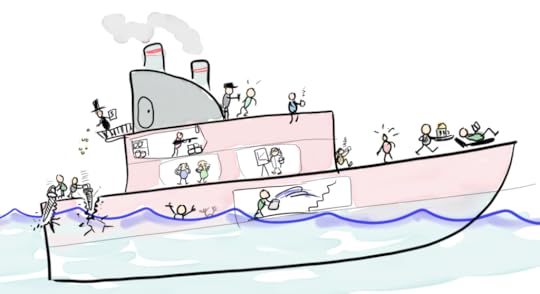
The Ship
For years I was hearing an increasing murmur and rumours about some kind of problem with the ship. Finally I decided to take a closer look, went up to deck, leaned out and looked down, and…. oh sh*t…. this ship is sinking! It’s tilting, some cabins are already flooded, with people frantically crowding the hallways and staircases trying to get to higher deck. It’s happening slowly, very slowly. In fact, the ship won’t be completely sunk during my lifetime probably. But my kids, and grandkids…. Darn!
So what’s going on here? I start roaming around, talking to people.

Lisa – scientist
Lisa is a scientist on board who’s been studying this for decades. Lisa and her colleagues saw this years ago and have been shouting about the problem ever since, but despite all hard evidence she’s been mostly ignored, passed off as a paranoid fearmonger. Although now with the actual water coming in people are starting to listen more to her.
I ask Lisa “Why is it sinking, and how can we stop it?”. She points out a bunch of people drilling holes, water pouring in. I stare in shock – “What, so WE are causing the problem?”. “Yeah” she says, with a resigned look.
“Why are we drilling holes?” I ask.
“They are used to produce electricity on board, and fuel for the vehicles on the ship”. And then she has some kind of technical explanation for how that works.
“And that’s sinking the ship?”
“Yup.”
“So they should stop!”
“Yup.”
“Why don’t they?”
“Because it’s their job. They get paid to do it.”
“But why?”
“Because our society has come to depend on the energy and fuel produced by the process. You and I are in fact paying for it, directly when we use electricity and fuel our vehicles, and indirectly through the ship tax which helps subsidize the drilling industry.”
“Isn’t there another way?”
“Yes there is. Solar panels. Wind turbines. Nuclear power. And more.”
“So why do we keep drilling holes then?”
“Old habit. Unions. Politics. Ignorance. Profit. Inertia. Plus, even if they stop drilling, the ship might sink anyway.” she sighed.
“What? Why?”
“Because there’s a delayed effect. Even if we completely stop drilling holes today, the ship will keep sinking for a few decades. And as water levels rise, the ship tilts to the side which increases flooding even more. And that’s just one of many vicious cycles going on. The more it sinks, the faster it sinks.”
“So we are screwed no matter what?”
“Well, if we keep drilling we are DEFINITELY screwed. If we stop drilling, most of the ship will probably still sink, but it happens over decades so maybe we can keep it from sinking entirely. It’ll be crowded and chaotic on board, but we can maybe maintain some semblance of civilization. But since the damage is pretty randomly distributed, the unlucky might start warring with the lucky, and the ship might get blown up in that process…”
“OK, stop, stop, I’ve heard enough. I get it. No matter what, we gotta stop that drilling!”

Amari – engineer
Amari is an engineer, he knows about the problem and runs a team that is working on all kinds of inventions to tackle the problem. Pumps to remove water. Alternative energy sources. Electric vehicles. Some kind of swarm of drones that fly around over the ship to stabilize it, despite the holes. An automatic hole repair bot. A “non-leaking-hole drill” that somehow makes one-way holes that don’t let water in.
“Is any of this going to work?” I ask him.
“Well, some of the things, like the pump here, will slow down the sinking.”
“But is it going to solve the problem?”
“No. For that we need a miracle.”
“So it’s impossible?”
“No, I didn’t say that. We’ve done miracles before. Industrial Revolution. Penicillin. Landing on the moon. The Internet.”
“So you mean one of your inventions might end up being the miracle that saves us from sinking?”
“Yeah. Odds are pretty low, but heck we gotta keep trying right?”

Susan – learner
Susan is sitting on deck reading a book. After a brief chat about the weather, I can’t help myself.
“Susan, lean out and look down there.”
She looks out.
“Wait, what is that? Looks like the boat is leaking?”
“Yeah, it’s sinking, cuz we’re drilling holes.”
“WHAT? Tell me more!”
I show her the evidence.
“We need to DO something”.
And she joins me as we wander around the ship, trying to figure out what to do.

Sara & Jack – refugees
Sara and Jack are drenched, stressed, and angry. They just came up from lower deck, having to elbow their way through crowds of wet people.
“We can’t live down there any more. We need a new cabin!”
“How’s that going?”
“Horrible! We keep being pushed back down again by people in the upper decks. They say they can’t fit any more refugees, they’re even building gates to cage us in! So now we’re camping out in this hall right here, and it’s getting darned crowded!”
“That sounds really bad!”
“It’s worse! Our food and fresh water stores down there were destroyed in the process, so people are starving. Some are talking about getting a gang together to attack the upper deck! I’d get out of the way!”.
I quickly move on.

Viktor – denier
Viktor is on deck, in a sun chair having a drink. He seems very calm and relaxed. I tell him about the problem. He smiles and shakes his head.
“Oh that water leak thing rumor? No It’s just bogus. The ship is perfectly fine. See? No leak here.” He gestures at the other lounging passengers.
I’m shocked.
“But the boat IS sinking, the evidence is overwhelming!”
I show him photos of the holes, I offer to take him down the lower decks, I give him Lisa’s report.
“No, it’s a conspiracy, man. Lisa cries “wolf!” so she can get more funding. Amari wants to sell his expensive machines and inventions. So they need to make up this silly story about the sinking ship. Don’t believe a word of it.”
I meet another passenger lounging in the sun.

Tahir – denier
“Yeah, I know the boat is sinking” says Tahir, while receiving his massage.
“So shouldn’t we DO something?”
“No point” he says. “The sinking is a natural process. Ships go up and down, there’s nothing we can do about it. We’ll lose a few of the lower cabins for a while, then the ship will come up again after a few decades, who knows. The scientists like to pretend they know stuff, but it’s all just nature and random variation.”
“But look at this report” I say, waving a bunch of papers in his face. “97% of all scientists on board this ship agree that the sinking is caused by us, by the drilling!”
“Bah, I don’t read boring research papers. Those people can use data and statistics to prove anything.”

Irina – nihilist
In the bar I talk to Irina. She’s drunk.
“So Irina, did you know that”… I begin.
“Yes, yes, the boat is sinking. Whatever. Who cares.”
“But….”
“The ship is sinking and we’re all going to die. But guess what, we’re all going to die anyway, we’ll get old and sick and die. That’s just life. In fact, I’ll probably die of something else before the ship sinks. Now, go away and let me drink.”
I go out to deck again, and find ….

Samish – zen guy
Samish is sitting peacefully on a mat on deck, facing the sunset, sipping tea with a smile on his face.
“Hi” he says, “how are you? You look a bit stressed.”
“Well, I just learned that this ship is sinking! Did you know that?”
“Yes, of course. It’s kind of obvious.”
“So how can you be so calm and peaceful?”
“Well, it’s all about perspective. Everything we know and love will disappear someday. Like this tea here. Tastes wonderful! It’ll run out, of course, but instead of fretting about that I’m just taking care to enjoy every sip. Now, have a seat and enjoy this beautiful sunset with me.“
I sit down and struggle between feeling admiration, envy, or frustration at his passive accepting stance. I also realize that he and Irina are both similar and different. They both share the “we’re all gonna die someday anyway” attitude. But Samish uses that to as a reason to enjoy the present, while Irina uses it as an excuse to get hammered and not give a damn. Samish is enjoying life and spreading happiness, while Irina seems more like a depressed cynic. Glass half full vs half empty. Samish looks at me. I decide to shut off the voice in my head and just watch the sunset for a while. Hmmm, it really is nice actually! Didn’t even notice it before. I breath deep and relax.
Later on I learn that Samish is actually on Amari’s team, the engineer, researching new technologies. So he’s found a nice balance between actually helping out, while still taking the time to enjoy life. He radiates positive energy, which helps people like me cope.
I decide to visit to the drillers.

Kai – driller
I shouted over the noise of drilling:
“Kai, please stop drilling holes! The ship is sinking”
“Well, that may or may not be true. But either way I don’t have a choice. Gotta feed my family. Guy like me ain’t gonna find another job so easily.!”
I give up after a few minutes of arguing. Instead I find his manager.

Smith – drill entreprenuer
“So you run a drilling company here on the ship?
“Yes. I’m a busy man with hundreds of employees, so be quick.”
“Please stop drilling holes! The ship is sinking!”
“Get out of here.”
“But you’re on this ship! And your family too! YOU ARE MAKING THE WHOLE SHIP SINK!”
He calls on the guards to “escort” me out. In fact, the guard seems hired especially to keep pesky inquisitive people like me away from the manager.
Later on I learn that he has bought the entire top deck of the ship, and insulated it against flooding. Hmmmmm.

Chad – survivalist
In the evening I see a sneaky-looking guy carrying a bunch of tools and canned food through a hallway.
“What are you doing?”
“Ssscchhhh! You don’t see me.”
“What’s that? Food rations? Tools? And uh…. Ammo?! What are you doing?”
He realizes that I’ll keep bugging him until he explains.
“Dude, the ship is sinking!” he whispers and looks around.
“Yeah, I know. So what are you doing?”
“I’m preparing my safehouse!”
“Your safehouse?”
“Yeah, I got an armed bunker in a storage section near top deck. Well hidden. Booby trapped. Got supplies there so I can survive for months on a completely flooded ship!”
“But… shouldn’t we stop the drilling instead? I mean, are you just gonna sit there in your safehouse while the rest drown and starve?”
He shrugs,
“Things are going to hell anyway, and I’m sure as hell not gonna be the first to go!”
“You think the others are just gonna stand idly by while you lock yourself in with crucial supplies?”
“That’s why I’m bringing the guns.”
I shiver and move on.

Chang – busybody
Chang is a stressed, busy man. He works in the restaurant. We exchange a few words while he is gathering up dishes.
“Did you know the ship is sinking?” I say.
“Uh, listen, I don’t really have time to talk OK?”
Every time I pass by, I attempt to talk to him about it, but he is always busy and just not in a frame of mind to discuss anything outside of this current work.

Wendy – wondering
Later on at the gym I bump into Wendy. I mention the problem with the ship.
“Yeah”, she says, “I know, and I’m really worried about it. I’d love to do something, but i don’t know what! I feel helpless.”
“We need to stop drilling holes” I say.
“So how do we get people to stop?”
“Well, that’s what I’m trying to find out.”
“OK, if you figure something out let me know how I can help!”
In fact, I meet quite a lot of people that share Wendy’s sentiment. Know about the problem, want to help, not sure how.

Pablo – freaking out
I see a guy running around in circles tearing his hair out.
“Hi, what’s your name?”
“WE’RE ALL GONNA DIE WE’RE ALL GONNA DIE WE’RE ALL GONNA DIE”
“Oh, so you heard about the problem. Well,…”
“WE’RE ALL GONNA DIE WE’RE ALL GONNA…”
“Uh, relax, panicking doesn’t help at all. Instead let’s talk about what we can d…”
“WE’RE ALL GONNA DIE WE’RE ALL GONNA…”
I move on.

Dave – helping out
Dave is always on the move, seems like a man with a purpose. At one point I manage to grab him for a few words.
“Hi Dave, what are you up to?”
“Well, the ship is sinking.”
“Yeah, I’ve noticed.”
“I’m not an expert. But I know there are lots of smart people doing good stuff, at least TRYING to solve the problem. Or slow it down. Or reduce the damage. People like Lisa and Amari. So I visit them every day, ask what they need, and help out in whatever way I can.”
“Wow, sounds great”
“There’s also a bunch of people who want to help, but don’t know what to do. So I try to learn what they can do, and spread the word. Not sure if it’s helping, but at least it feels good to do something. And it sure beats sitting around worrying.”
“Yes, I’ve met a bunch of people that want to help! For example that lady over there, Wendy.”
“Great, I’ll go talk to her now! By the way, I made a short video summarizing the whole issue, can you help spread it?”
“Sure!”
Whew, maybe I actually did something useful.

Jenny – aid worker
Jenny and her team are heroes and saviours, working very hard bailing water, carrying supplies to refugees, and sealing off flooded sections of the ship. Basically doing whatever they can to reduce the misery of the people affected by the flooding. She looks exhausted.
“Hi Jenny, what are you doing? Can I help?”
“Great, take this bucket and bail this corridor” she says and hurries on by.
I help out for a while until I’m exhausted, and retire back down to my hut. Feels good to help, but also a bit futile, as new water keeps coming in.

Who are you? Who do you want to become?
Dear reader. Thanks for reading to the end. Yes, this article is a metaphor for climate change. The sinking ship is the planet’s ability to sustain humanity. The drilling of holes in the ship is a metaphor for burning fossil fuels and causing global warming. Flooding is a metaphor for all the consequences (draughts, starvation, storms, heat, and… yes, flooding).
Who are you in this story? Who would you like to become? Who would you like to help?
For more info see my animated video “Friendly Guide to Climate Change” and our site everytoncounts.org.
And hey, why not go sign the Carbon Manifesto while you’re at it 
June 16, 2017
Friendly Guide to Climate Change (and what you can do about it)
I’ve spent ALOT of time the past few months trying to understand climate change and global warming, and how to effectively contribute. I’ve dug through 1000-page scientific reports, talked to experts, and basically tried to digest as much information as possible. I was surprised by how little I knew before. I’m convinced that, the more people who really understand the problem, the more effectively we’ll be able to solve it (or at least mitigate it).
So here’s a short animated video summarizing the whole issue. The problem, the consequence, the root cause, the solutions, and what you can do to help. All packaged in a fun and easy-to-digest way, same style as my other videos about Spotify Engineering Culture and Agile Product Ownership. The video is all based on solid scientific references, not speculation or rumours.
Please help spread it as widely as possible! Link to this blog post, or the youtube link: https://youtu.be/3CM_KkDuzGQ
I hope this video will inspire many people to make small changes, and a few people to make big changes. Who knows, maybe the next young Elon Musk is out there somewhere, just waiting for the spark of inspiration 
March 31, 2017
Effective carbon offsetting – what we’ve learned and what we’re doing
Flying causes global warming. That sucks. But neverthless, we fly sometimes. Conferences, vacations, business trips. So what can we do? Well, here’s a simple rule of thumb:
Fly as little as possible. Reduce the frequency & distance. Consider train for shorter trips.
When you do fly, make sure you carbon offset. From wikipedia: “A carbon offset is a reduction in emissions of carbon dioxide or greenhouse gases made in order to compensate for or to offset an emission made elsewhere.”
The obvious question then is – HOW do you carbon offset? I was surprised when I dug into it. “Traditional” carbon offsetting (buying emission credits and things like that) seems pretty useless! I couldn’t find any credible evidence that it makes a real difference! Almost like a scam.
So is there another way to carbon offset? Yes! This chart summarizes some of what I’ve learned so far. Read on for details. Got any more suggestions? Add comments. But please quantify.
(see this spreadsheet for the underlying numbers)
At Crisp we recently made a policy decision, unanimously:
For every flight organized by Crisp, we set aside SEK 100 per passenger-flight-hour to a carbon offset account.
That carbon offset account is managed by Climate Crisplet – a subset of people in Crisp who are interested in this kind of stuff and make sure the money is spent wisely. We try to maximize ROI in terms of CO2-reduction per money invested.
Why 100kr? Because flying emits about 0.23 tons of CO2eq per passenger hour <ref1, ref2, ref3>. It varies a bit depending on length of flight, speed, height, aircraft model, etc. But 0.23 tons per passenger-hour is a pretty reliable average (including radiative forcing).
CO2eq (Carbon dioxide equivalent) is the official unit of measurement for greenhouse gases. It is a way of aggregating different types of gases (such as CO2, methane, and others) into a single unit. We emit about 50 billion tons of CO2eq per year worldwide, and that’s the key driver of climate change.
So a 4-hour flight results in about 1 ton of greenhouse gas per passenger. We can’t take that specific ton back, it will stay in the atmosphere for many decades. But can we somehow pay to stop a DIFFERENT 1 ton of greenhouse gases from being emitted somewhere else? If so we’re fine right?
I’ve dug deep into this and concluded that yes, we can! And 400kr, if wisely spent, should be more than enough. Hence, 100kr per passenger-hour. We just need to be picky about HOW we spend it.
Our last conference trip involved flying 35 people to Marbella and back (9 hours of flying, there and back). So 315 passenger-hours, or 71 tons of greenhouse gases. Thanks to our carbon offsetting policy, the Climate Crisplet got 31,500kr to do something wise with. After some research we ended up doing this:
3150kr (10% of the total) to Flygreenfund. They invest in aviation biofuel. This is jet fuel made from things like recycled frityrolja (how the heck do you translate that…. it’s recycled oil from deep-frying). Their estimate is that about 400kr compensates for 1 hour of flying.
Impact: about 8 tons (very loose calculation)
28350kr (90% of the total) to Trine. They run a crowd funding platform for rental solar installations in sub-saharan Africa. The climate impact is measurable because they can calculate how much less kerosone and diesel needs to be burned when they install solar panels in a village. In this case we invested in Gamba, Zanzibar. Our investment is estimated to give 700 people clean electricity, reduce CO2 emissions by 260 tons, and give Crisp an 5.4% annual rate of return. Triple win! We’ll then reinvest that money to further reduce greenhouse gases.
Impact: About 260 tons (pretty specific calculation).
So our flight caused an increase of about 70 tons, and our investment will cause a decrease of about 270 tons. That’s a net win of almost 200 tons!
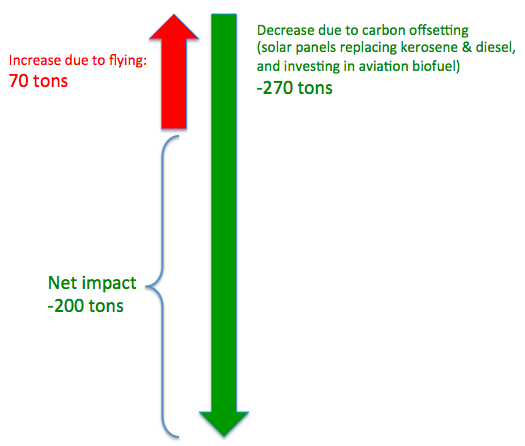
But wait, doesn’t that mean our price tag of 100kr per passenger-hour is too high?
Not really. Because the numbers are approximate. The are different ways of calculating this stuff, and each number comes with an uncertainty. But a 70 ton increase vs 270 tons reduction means we have a lot of margin for error! Even if the reductions were optimistic by a factor 3, we still win!
There’s also another very important factor to keep in mind: investment vs cost. Buying carbon offsets is money gone. You don’t get that back again. Same with things like flygreenfund. Trine, however, is an investment with an expected return (but with some risk of course). That means we are likely to get the money back, so we could invest it again and again! There are other companies offering similar types of services, basically handling the “hey how can I invest money and help the climate while getting a return on investment?” thing. For example Bright Sunday.
So why did we decide to spend 10% of our carbon offset money on Flygreenfund? Their impact is not as easily quantified as Trine, and there is no return on investment. But they are addressing the root cause – fossil fuel emissions from flying! And we want to support that.
Our carbon offsetting recommendation
So what’s the moral of this story? Don’t buy traditional carbon offsets? Invest in Trine? No, the learning goes deeper.
Have a clear and simple policy. In our case: 100kr per passenger-hour, and a team that is entrusted to manage the money.
Do the math. Stay clear of fluffy things like emission rights, unless someone can show you how it (physically!) causes CO2 reduction. Even when you see specific numbers, find out where those numbers come from. For example, Trine publishes their specific CO2 reduction estimates, but I asked them to walk through the underlying calculation with me (which they did willingly). Note that the climate impact varies quite a lot across their different projects.
Distinguish between costs and investments. A cost is only justifiable if it has a VERY clear and concrete impact, since that money can’t be reinvested later.
Trust is everything. Before investing, find out who is handling the money and what their motives are. Or follow in the tracks of someone else who you trust, and who has done the research for you. Feel free to follow us if you like









